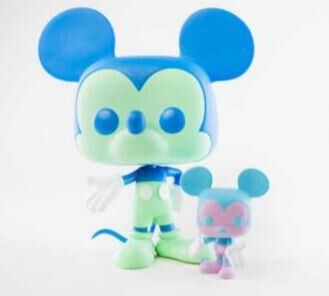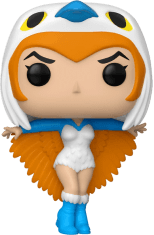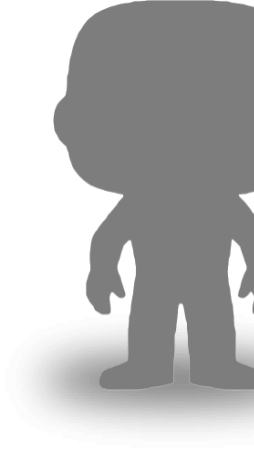“You're the top! You're the Colosseum,
You're the top! You're the Louvre Museum,
You're a melody from a symphony by Strauss,
You're a Bendel bonnet, a Shakespeare sonnet,
You're Mickey Mouse.”
-“You're the Top” by Cole Porter
Ninety years ago, Mickey Mouse made history when he first appeared on the screen in Steamboat Willie, tapping his toes, spinning the captain's wheel and whistling for all he's worth. The Jazz Singer was released the year before, ushering in a new and exciting era of film and Walt Disney was quick to capitalize on the nation's fascination with synchronized sound. It's fitting that the Disney mascot was the star of the studio's first sound film, even if it was a pale (black and white) herald of what was to come, including Mickey's first feature length film—Fantasia in 1940—as well as more than 130 other cartoons garnering 10 Academy Awards nominations for Best Animated Short Film and a star with his name on the Hollywood Walk of Fame—the first such honor for a cartoon character.
But Mickey's journey from whistling steamboat crewman to “among the most recognizable pop cultural figures in history” as Wired called him, was neither brief nor simple. From Disney's earliest efforts to capture the character that would represent his brand's imagination, charm and incredible reach, Mickey proved elusive, requiring decades and multiple cartoonists to become what art historian Garry Agpar called “a protean expression of the qualities, values, and dreams of the man and country that spawned him.”
When Walt Disney first assigned cartoonist and animator Ub Iwerks with the task of creating a new character in the spring of 1928, Iwerks would propose cats, dogs, a female cow, male horse and male frog before Walt landed on the idea of a mouse named Mortimer. Iwerks helped define and refine the character and Walt's wife Lillian convinced him to change the mouse's name to Mickey. But the Mickey who emerged in those first short films including “Steamboat Willie,” “The Barn Dance” and “The Opry House” wasn't the same mouse—physically or personality-wise—as the wizard's apprentice who indulges in feats of magic in “The Sorcerer's Apprentice" 12 years later.
In “A Biological Homage to Mickey Mouse,” paleontologist, evolutionary biologist and science historian Stephen Jay Gould documented these changes from a scientific perspective. The article quotes British author Christopher Finch's semiofficial pictorial history of Disney's work, saying, “The Mickey Mouse who hit the movie houses in the late twenties was not quite the well-behaved character most of us are familiar today. He was mischievous, to say the least, and even displayed a streak of cruelty.” But as Mickey's prominence in popular culture rose, so too did the public's expectations for his behavior.
“Mickey … had become virtually a national symbol, and as such he was expected to behave properly at all times,” Finch continued. “If he occasionally stepped out of line, any number of letters would arrive at the Studio from citizens and organizations who felt that the nation's moral well-being was in their hands … Eventually he would be pressured into the role of the straight man.” And, as Gould notes, this "softened" personality coincided with a similar evolution in appearance.
“As Mickey became increasingly well behaved over the years, his appearance became more youthful,” Gould wrote. “Measurements of three stages in his development revealed a larger relative head size, larger eyes, and an enlarged cranium—all traits of juvenility … To give him the shorter and pudgier legs of youth, they lowered his pants line and covered his spindly legs with a baggy outfit. (His arms and legs also thickened substantially—and acquired joints for a floppier appearance).”
Mickey wasn't the only character to receive a makeover. Donald Duck also became more adolescent in appearance, with a shorter beak and bigger eyes. Interestingly, Gould noted that animated Disney villains tended to retain their adult appearance. Specifically, Mickey's romantic rival Mortimer is drawn with a head size that's only 29 percent of the character's body length while Mickey's head size is 45% of his body length. Similarly, Mortimer's snout remains longer at 80% of his head length to Mickey's 49%.
Is it a little strange that an evolutionary biologist devoted so much time and thought to measuring cartoon characters' snouts, heads and bodies using phrases like “bulging cranium” and “cranial vault”? Gould acknowledged the strangeness of his study in his article, saying, “You may, indeed, now ask what an at least marginally respectable scientist has been doing with a mouse like that. In part, fiddling around and having fun, of course. (I still prefer Pinocchio to Citizen Kane.)” But Gould was driven by a broader and more culturally-impactful motivation as well. Mickey Mouse is one of the most recognizable characters in the world, representing not just a brand but an entertainment empire, and understanding the character's development and the reasons behind it is a fascinating endeavor with larger cultural implications.
In many ways, Mickey Mouse set the standard for what it means to be an animated character. Less than six months after his “Steamboat Willie” debut, Mickey would star in “The Opry House” wearing the white gloves that would become an iconic part of his look. The gloves helped highlight the character's gestures by providing a stark contrast against his body, but they also helped conceal the fact that his hands had only four fingers. Disney explained that five fingers on a small mouse looked excessive and the entrepreneur, animator and voice actor would estimate that the decision to eliminate one finger saved the studio millions of dollars in animation costs. Several subsequent Disney cartoon characters including Minnie Mouse, Goofy and Jiminy Cricket would also wear white gloves, as would many iconic non-Disney characters including Bugs Bunny, Woody Woodpecker, Marvin the Martian, Mighty Mouse and Mario.
Highlighting his prominence in popular culture is the fact that Mickey Mouse has come to be associated with protest, or write-in votes. The American Prospect article “If You Give a Mouse a Vote” cites Mickey Mouse as “the most frequent guest-star in the discard write-in pile.” One Georgia election supervisor was quoted as saying, “Mickey always gets votes. If he doesn't get votes in our election, it's a bad election.” Interestingly, Mickey's pal Donald Duck is a close contender for second most write-in votes. In a 1932 mayoral race in New York, Mickey Mouse got a single vote, along with gangster Al Capone. The state of Georgia attempted to lay down the law in 1987, stating “voters in Georgia would no longer be allowed to vote for Mickey Mouse in state elections.” And this habit isn't limited to Americans. The entire mouse pack is particularly popular in Sweden when elections roll around with The Donald Duck Party receiving votes in 2002, 2006 and 2010 elections.
And, in the United States at least, Mickey Mouse might not be the worst elected official given that over the past 90 years the character has become aligned with the country's values and identity. As The Conversation states in “Happy birthday Mickey Mouse—animation's greatest showman is 90,” Easily identified by nothing more than a white glove or those famous ears, he has come to represent the core principles of what it is to be American.” That might be a large burden for a small mouse to bear, but Mickey has more than proven his mettle over the last 90 years.









 Items in your cart may be affected with updated location.
Items in your cart may be affected with updated location.




































